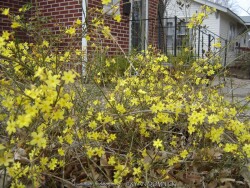



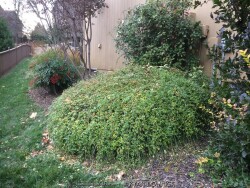
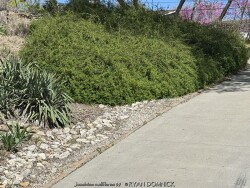

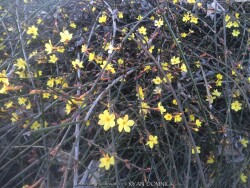
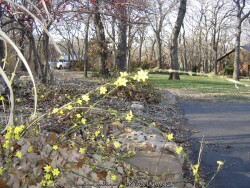
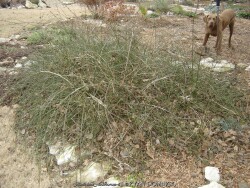
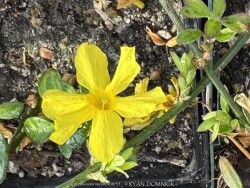
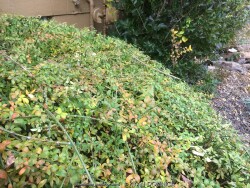
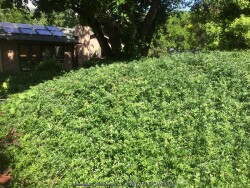
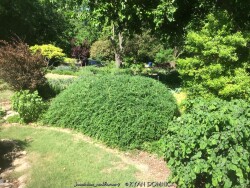
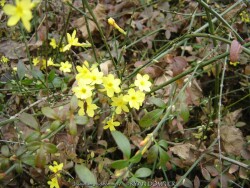

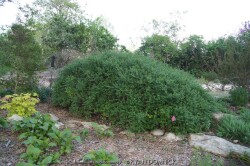
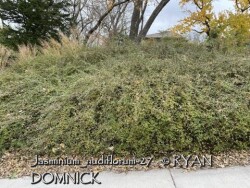
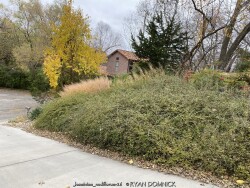
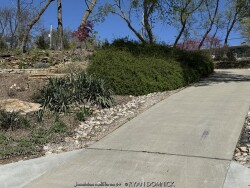
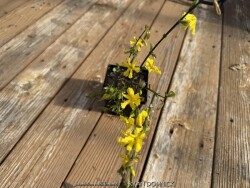
Plant Min Zone: 5b
Plant Max Zone: 10b
Sunlight: All Day Full Sun, Full Sun, Part Sun, Shade
Water / Rainfall: Low, Average
Soil Quality: Poor, Average
Bloom Season: Winter, Spring
Flower Color: Yellow
Berry / Fruit Color: Insignificant
Spring Foliage Color: Dark Green
Summer Foliage Color: Dark Green
Fall Foliage Color: Dark Green, Yellow
Evergreen Foliage: No
Winter Interest: Yes
Scented Flowers: No
Drought Tolerance: Medium, High
Wet-Feet Tolerance: Low
Humidity Tolerance: High
Wind Tolerance: High
Poor Soil Tolerance: Rocky Soils, Sandy Soils, Shallow Soils, Clay Soils, Alkaline Soils (high PH)
Height: 3' - 4'
Width: 5' - 7'
Growth Rate: Medium, Fast
Service Life: Very Long: 10-20 years
Maintenance Need: Low
Spreading Potential: Medium
Yearly Trimming Tips: Trim Shrub to Desired Size in Spring: Blooms on Old Wood in Winter.
Plant Grouping Size: Medium Grouping of 5-10, Mass Planting of 10 or more
Best Side of House: South Exposure, West Exposure, East Exposure
Extreme Planting Locations: Survives Under Roof Overhang, Root-Bound Soils Under Tree, Top of Retaining Wall Locations, Resistant to Rabbits
Ornamental Features: Long Lasting Fall Color, Multiple Seasons of Interest, Fine Texture
Special Landscape Uses: Erosion Control, Hedge Row
Possible Pest Problems: None
Plant Limitations: Aggressive Rhizomes / Runners, May get Occasional Winter-kill, Needs Thick Winter Mulch, Short / Unreliable Blooming Season
Shippable in 2026: YES
Winter Jasmine (Jasminium nudiflorum) is a spreading dwarf shrub native to China. It features dark green glossy leaves that remain attractive all summer. The density of the shrub overtime is unmatched, completely eliminating any weeds including tree seedlings from emerging. Bright yellow five-petaled flowers resembling forsythia bloom extremely early in the spring usually in February or March before foliage growth (in Lawrence, KS). Flower buds are hardy to about 0° so flowering may not occur every year if temperatures get lower. Occasionally this shrub will bloom in the middle of winter when we have a 2-3 week warm spell. When it does bloom, it creates a spectacular show completely covering the shrub. It will grow in full sun or full shade in medium to dry soils including some dry-shade. It tolerates moist soils and brief periods of saturated soils after heavy rains. Fall color is yellow but drops quickly. Stems take on an olive greenish color in winter rendering them mildly attractive. Winter jasmine is commonly grown as a spreading groundcover shrub for difficult areas, frequently used as large mass planting on hills. Because of its tolerance for adverse conditions including poor soil and rock, it is often one of the last resort plants that will survive in certain areas. It competes well under large shade trees and helps absorb leaf litter allowing it to break down and add nutrients back to the soil. This plant also does well in hot dry parking lot islands, hell strips, and along busy roads in full sun. Another great spot is planting on top of a retaining wall allowing it to cascade down. Further uses include erosion control and streambank stabilization. We do not recommend planting in small areas or in spaces that it will overrun neighboring plants. It only spreads above ground as horizontally growing stems touch the ground and root. This does make maintenance easier to control the spread of the plant versus digging out rhizomes. Avoid North exposures and wet soils. Considered one of the most versatile and best plants for solving difficult landscape challenges.